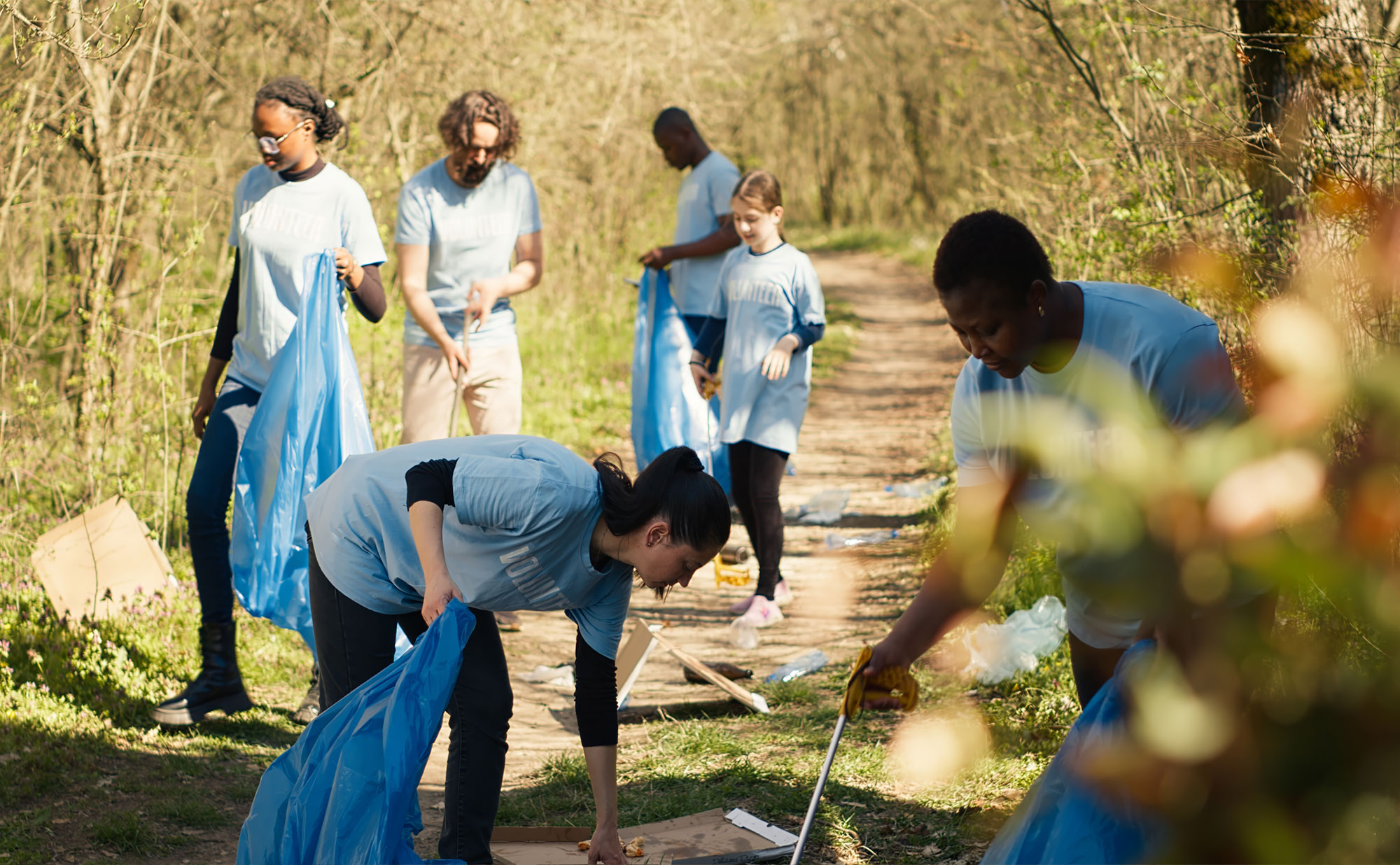Organizing a clean-up for public areas like parks, beaches, or roads not only benefits the environment, but also serves as a way to create a community of like-minded individuals.
Activity Type: Environment, Community
Duration: 4–6 hours
Ages: 5+ years
Here’s a guide on how to organize a clean-up event:
Plan and Prepare
- Identify the Area
Choose a public location that needs cleaning. Consider travel distance, accessibility, the extent of littering, the impact on the community, and safety. - Obtain Permissions
Contact local authorities to get the necessary permits and permissions for the clean-up. This will help to avoid any legal issues. The authorities may also be able to help broadcast the event to help attract more volunteers. - Set a Date and Time
Select a date and time that is convenient for most volunteers. Weekends or holidays usually work best. - Recruit Volunteers
Reach out to local community groups, schools, businesses, and social media platforms to recruit volunteers. Emphasize the importance of their participation in keeping their community clean. - Arrange Supplies
Gather necessary cleaning supplies such as gloves, bin bags, recycling bins, litter pickers, brooms, rakes, and safety vests. Borrow or rent equipment to minimize costs.
Community Engagement
- Spread the Word
Broadcast the clean-up event on social media, flyers, local newspapers, and community bulletin boards. Create a catchy hashtag to generate buzz. - Engage Schools and Youth Groups
Involve schools and youth organizations by promoting the event as a learning opportunity. Encourage students to participate and earn community service hours. - Partner with Local Businesses
Collaborate with local businesses by asking them to contribute via sponsorships, donations for supplies, or refreshments for volunteers. Many companies are looking for projects as part of their corporate social responsibility goals, and these type of local community events help to strengthen their bonds with the community. - Offer Incentives
Consider offering incentives such as certificates of appreciation, T-shirts, or small prizes for participants. This motivates volunteers and enhances their sense of accomplishment.
Execution
- Brief Volunteers
Organize an orientation for the volunteers before the clean-up. Review safety guidelines and any pertinent laws, distribute equipment, and assign specific areas for cleaning. - Safety First
Emphasize safety throughout the event. Depending on the weather, advise volunteers on appropriate clothing that they should wear, as well as any preemptive care to be taken such as sunscreen. Assign a first-aid station and designate volunteers as safety monitors. Ensure that all volunteers stay hydrated. - Organize Teams
Divide volunteers into teams and assign each team a designated area to clean. Assign a leader for each team who will be responsible for coordinating efforts and reporting any issues. - Collect Litter
Instruct volunteers to pick up litter carefully, separating recyclables from non-recyclables. Use designated bins for proper waste disposal and recycling. - Document Progress
Take a few photos and videos throughout the clean-up to document the impact of the event. Share these on social media to inspire others and celebrate the community’s efforts. These will also serve as motivation for new volunteers to participate in future clean-ups.
Post Clean-up
- Dispose Waste
Coordinate with local waste management authorities to ensure proper disposal of collected waste. Recycle materials whenever possible to minimize environmental impact. - Express Gratitude
Thank volunteers, sponsors, and partnering organizations for their contributions. Send out thank-you notes, post-event emails, or organize a small appreciation ceremony. If you have enough in your budget, organize food and drinks for the volunteers to enjoy at the end of the event. - Evaluate and Plan for the Future
Reflect on the event, identifying what went well and areas for improvement. Consider making the clean-up a recurring event to maintain the cleanliness of the area.
Organizing a community clean-up requires careful planning, effective communication, and enthusiastic participation. Clean-ups have a significant impact on the environment and foster a sense of pride among volunteers. They also promote a sense of ownership and community between participants. Participating in clean-ups serves to keep people conscious about not littering and keeping their surroundings clean. This benefits the whole community in the long-run.

Leave a Reply